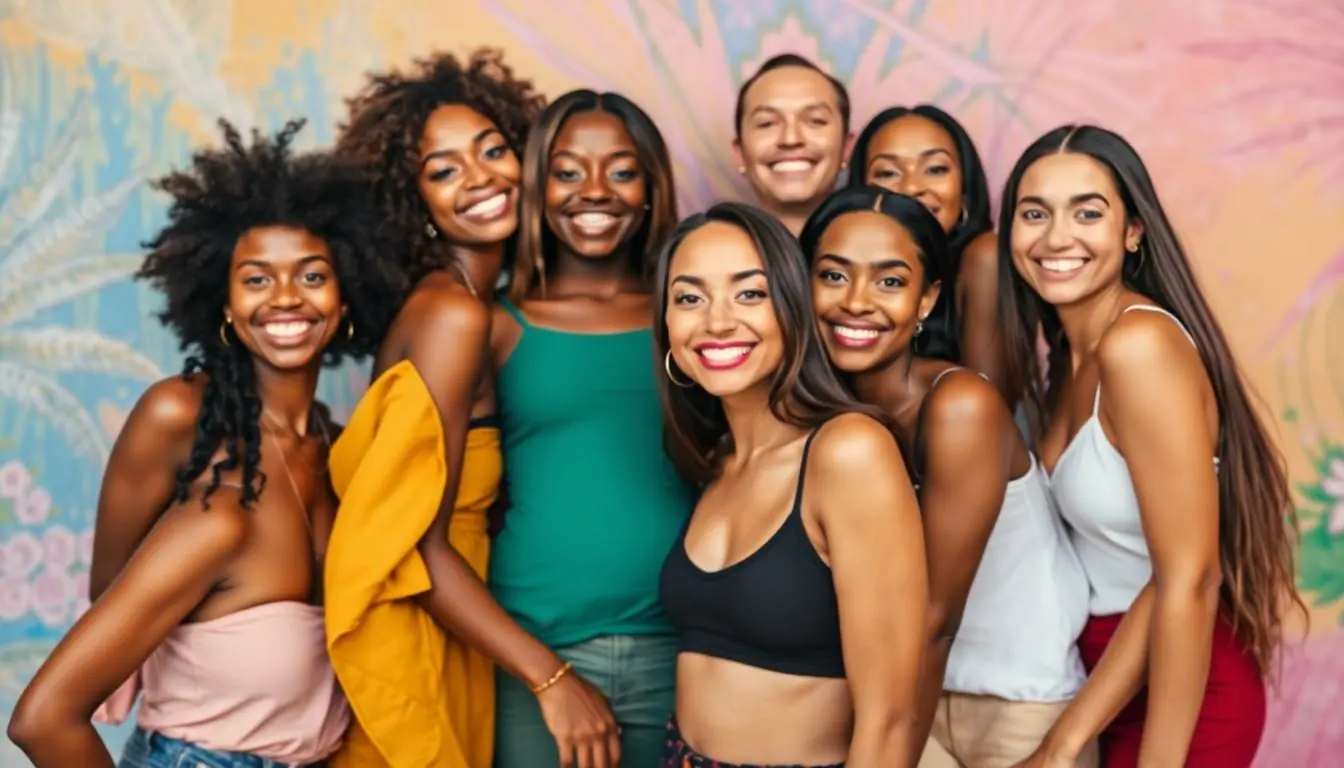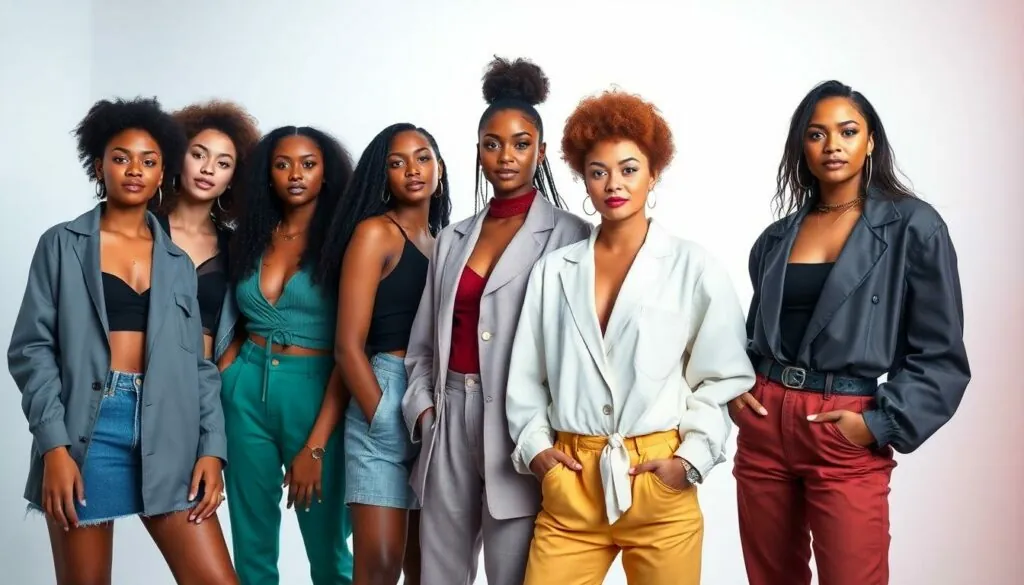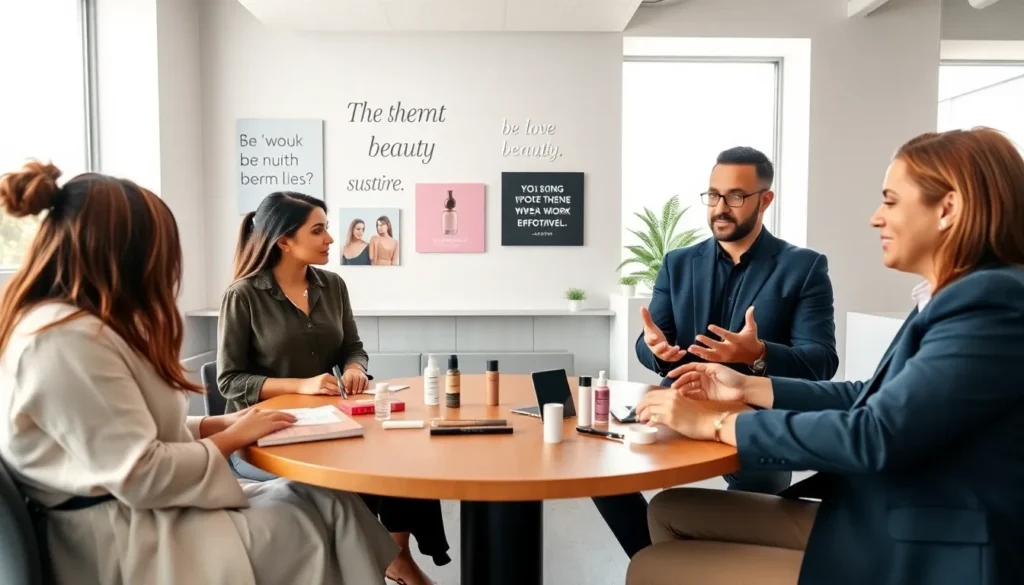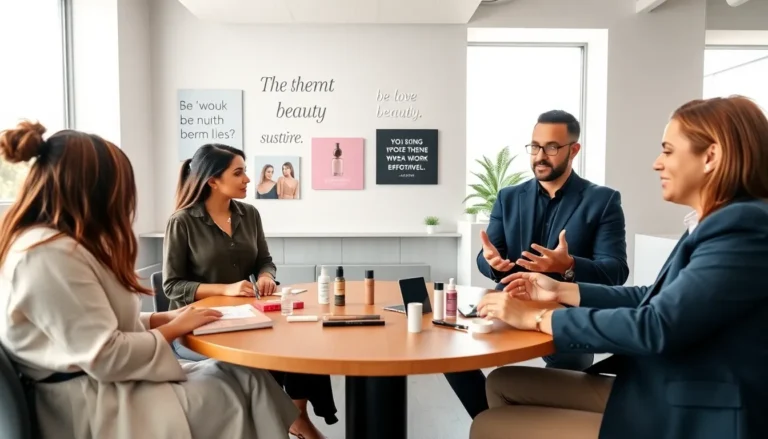Table of Contents
ToggleBeauty magazine covers are like the window displays of the fashion world—glamorous, eye-catching, and often setting unrealistic standards. They promise a glimpse into a world where flawless skin, perfect hair, and the latest trends reign supreme. But behind those glossy pages lies a fascinating blend of artistry, marketing, and sometimes, a sprinkle of Photoshop magic.
Ever wondered how those stunning images come to life? From the models chosen to the colors splashed across the cover, every detail is meticulously crafted to captivate readers. In a landscape where first impressions matter, these covers do more than just sell magazines; they shape beauty ideals and influence trends. So buckle up as we dive into the captivating realm of beauty magazine covers and uncover the secrets behind their allure.
Overview of Beauty Magazine Covers
Beauty magazine covers serve as powerful visual statements that not only attract readers but also reflect cultural beauty standards.
Historical Development
Beauty magazine covers evolved significantly since their inception in the late 19th century. Early covers featured illustrations and paintings, focusing more on artistic representation. The introduction of photography in the 1920s marked a turning point, allowing real-life models to grace the covers. By the 1960s, celebrities began to dominate, shaping public perceptions of beauty. In recent decades, diversity in representation has increased, as publishers recognize the need to connect with a broader audience. Current trends reflect a departure from conventional beauty norms, emphasizing authenticity and inclusivity.
Key Elements of Design
Design plays a critical role in capturing audience attention on beauty magazine covers. Color schemes often evoke specific emotions, guiding reader responses. Layout arrangements help in directing the viewer’s focus, highlighting essential elements like headlines and images. Typography choices convey brand identity and set the tone for the publication. Imagery typically showcases models in aspirational poses, aiming to represent unattainable beauty ideals. Attention to detail in design elements ensures that covers not only stand out but also resonate with cultural trends, fostering engagement and interest in the content within.
Impact on Beauty Standards

Beauty magazine covers significantly influence societal perceptions of attractiveness. They often dictate trends and establish ideals that many aspire to.
Representation and Diversity
Representation shapes cultural narratives surrounding beauty. Recent years show an increase in diverse models on covers, reflecting varying skin tones, body types, and cultural backgrounds. This shift promotes inclusivity, enabling broader audiences to connect with beauty representations. Magazines featuring a mix of ethnicities help normalize diverse standards, making beauty more attainable. For instance, publications like Allure and Essence celebrate differences, encouraging inclusivity over one-dimensional ideals.
Influence on Consumer Behavior
Consumer behavior aligns closely with the imagery portrayed on covers. Attractive visuals often lead readers to associate magazine content with high-quality beauty products and services. Research indicates that brands featuring models who resonate with consumers significantly boost purchasing interest. When magazines emphasize specific beauty trends, they motivate audiences to mimic styles or adopt beauty products showcased. Such influence can lead to increased demand for cosmetics and fashion items linked to the images seen in these prominent publications.
Analyzing Popular Beauty Magazine Covers
Beauty magazine covers not only showcase current trends but also capture moments in cultural history. Examining iconic covers reveals how they reflect societal views of beauty over time.
Iconic Covers Through the Years
Each decade features iconic covers that define the era’s beauty standards. The 1960s introduced glamorous images of celebrities like Audrey Hepburn, showcasing classic elegance. In contrast, the 1990s highlighted supermodels like Naomi Campbell and Cindy Crawford, emphasizing aspirational beauty. More recent covers feature diverse representations, with magazines like Vogue and Elle showcasing models of different backgrounds and body types. These shifts illustrate a broader societal acceptance of varying standards.
Current Trends in Cover Art
Current beauty magazine covers emphasize authenticity and relatability. Bold colors and minimalist designs dominate the market, drawing attention to the featured model or product. Many covers now feature real people, moving away from traditional celebrity focus. This trend resonates with readers seeking genuine representation. The integration of social media aesthetics also plays a crucial role, with covers designed to appeal to younger audiences. Visual storytelling elements create a strong connection with cultural movements, making them more impactful.
The Role of Photography in Cover Design
Photography plays a pivotal role in the design of beauty magazine covers. It captures the essence of beauty, drawing readers’ attention while conveying a specific message or theme.
Techniques and Styles
Various techniques enhance the visual appeal of magazine covers. High-resolution images create sharp details, making the visuals striking. Dramatic lighting adds depth and highlights features, often directing focus to the model’s face. Creative angles capture unique perspectives, showcasing beauty from different viewpoints. Retouching smooths imperfections, ensuring models appear flawless. The use of color theory creates emotional connections, as certain hues evoke specific feelings. Bold layouts integrate photography with typography, increasing overall impact. Each technique contributes significantly to shaping the viewer’s perception of beauty and style.
Famous Photographers in the Industry
Several renowned photographers have shaped the beauty magazine landscape. Annie Leibovitz revolutionized portrait photography, infusing storytelling into her visuals. Steven Meisel, known for his work with Vogue, captured iconic moments, defining fashion photography for decades. Patrick Demarchelier gained recognition for his elegant and vibrant imagery, blending glamour with realism. Mario Testino’s celebrity portraits often exude charisma, attracting a diverse audience. Each photographer’s unique vision influences trends, pushing boundaries within the industry and enhancing the artistic value of cover designs.
Beauty magazine covers serve as powerful reflections of societal ideals and trends. They not only capture attention but also influence perceptions of beauty across generations. The evolution from illustrated designs to diverse photographic representations showcases the industry’s responsiveness to cultural shifts.
As beauty standards continue to evolve, the push for authenticity and inclusivity in cover art remains crucial. This ongoing transformation invites readers to embrace a broader definition of beauty. With each cover, magazines play a vital role in shaping narratives and inspiring individuals to celebrate their unique beauty.







